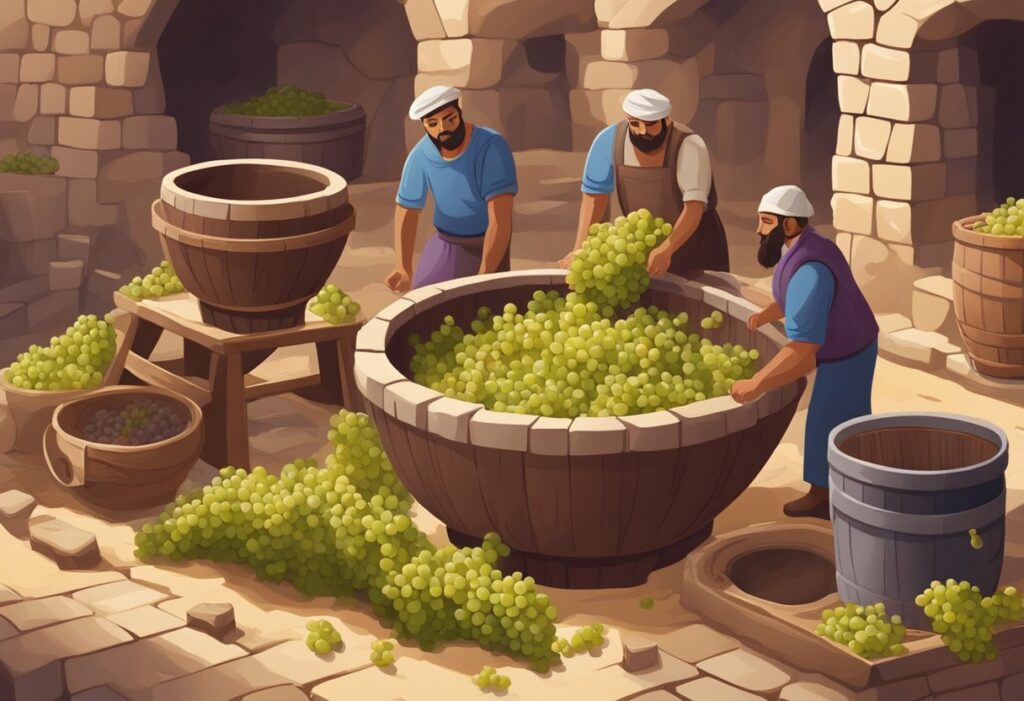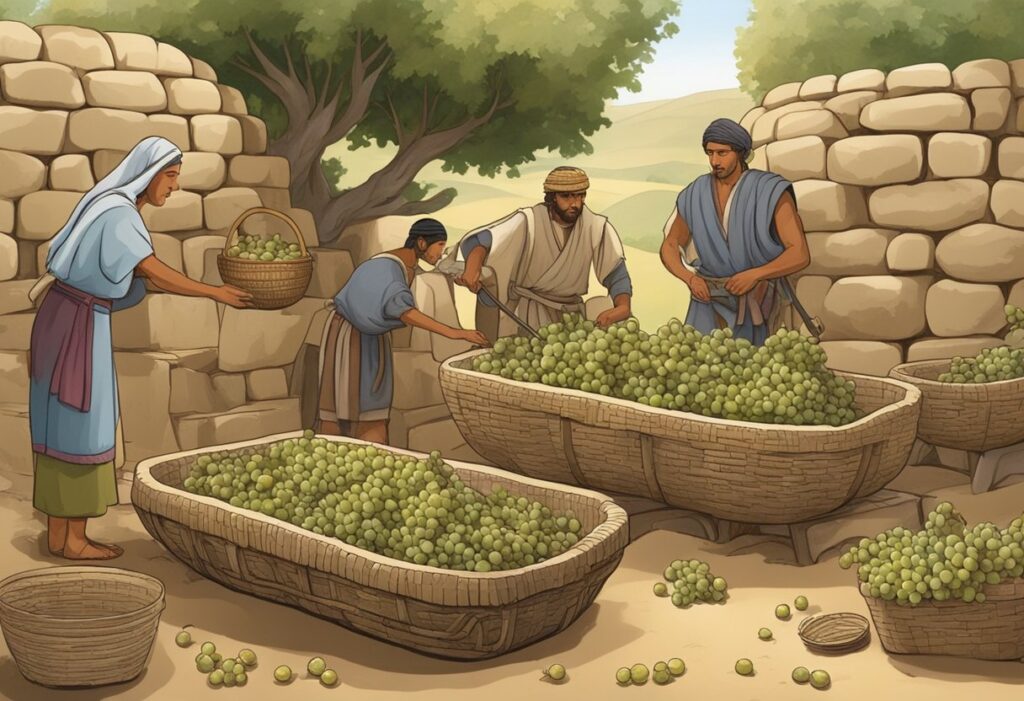Wine has always played a special role in human culture, deeply connecting to religious rituals and social practices. You might be surprised to learn that wine’s connection to religious ceremonies dates back to ancient Egypt, where it was more than just a drink. In the lush Nile Delta, grape cultivation and winemaking were integral parts of society and economy, used significantly in religious ceremonies and social events (Egyptian wine culture).
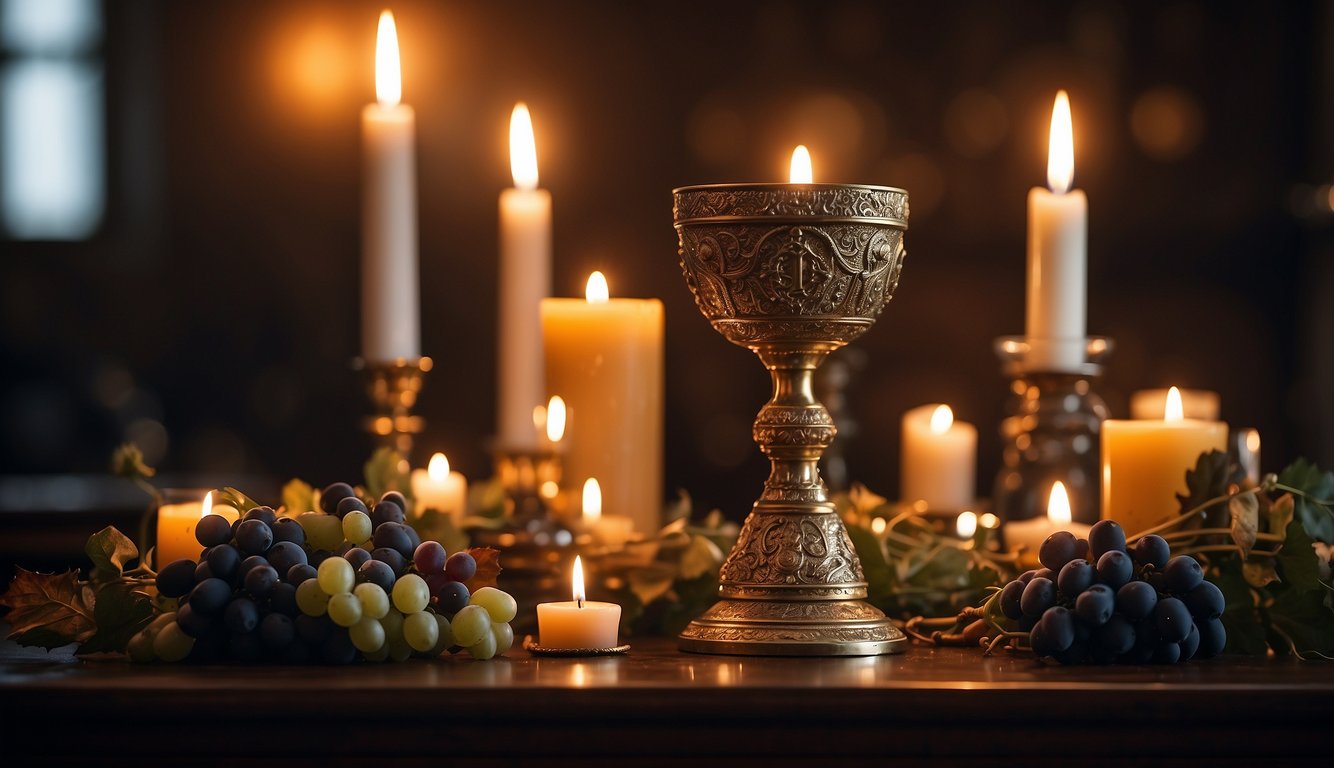
From the early days of Judaism and Christianity, wine symbolized sanctity, sacrifice, and community. Today, you’ll still find wine being used in many ceremonies, from Jewish Shabbat to Christian Eucharist, highlighting its lasting cultural impact (history of wine and religion). The traditions may have evolved, but the symbolic power of wine remains strong.
By exploring how wine has been intertwined with religious practices through the ages, you get a richer understanding of its role in both ancient and modern times. With roots in ancient rituals and a continued presence in modern celebrations, wine serves as a bridge between the past and the present, making it a fascinating subject to explore (Wine in religious ceremonies).
The Historical Roots of Wine in Religious Ceremonies
Wine has played an integral role in religious practices throughout history. From the ancient Egyptians to the Greeks and Romans, wine’s importance in rituals and ceremonies was profound, symbolizing a connection to the divine.
Viticulture and Winemaking in Ancient Civilizations
Viticulture—the cultivation of grapevines—was a significant practice in ancient societies. Winemaking began around 6000 BCE in the regions of present-day Georgia and Iran. By 3000 BCE, Egyptians had developed advanced techniques for producing and storing wine. These practices spread into the Mediterranean, particularly among civilizations like the Greeks and Romans. They saw wine not just as a beverage but as a sacred substance essential to religious and social events.
Grapevine Cultivation and Domestication
The Vitis vinifera species, which includes the common grapevine, underwent domestication to improve taste and yield. The Mediterranean climate was ideal for vineyards, promoting grape cultivation. Growing grapevines became both an agricultural and spiritual activity. The spread of grapevine cultivation supported the expansion of wine use in rituals and festivals. Domesticated grapes provided a stable source of wine, strengthening its role in various ceremonies.
Religious Significance of Wine in Ancient Egypt
In ancient Egypt, wine was deeply tied to religion and mythology. Osiris, the god of the afterlife, was often associated with wine and rebirth. During religious ceremonies, Egyptians used wine as an offering to gods like Osiris and Hathor, the goddess of love and joy. Rich vineyards along the Nile produced wine for these rituals. Notably, wine production and consumption were an integral part of both elite households and temple offerings.
Wine’s Role in the Rituals of the Greeks and Romans
The Greeks and Romans revered wine in their religious practices. For the Greeks, wine was sacred to Dionysos, the god of wine and ecstasy. Bacchus, the Roman counterpart, played a similar role. Rituals and festivals celebrated these gods, involving communal drinking and libations. Wine was a symbol of joy, community, and divine favor. Amphorae and elaborate vessels were designed to store and serve wine during these sacred ceremonies.
You can explore more about the historical connections of wine and religion through resources such as the history of wine and religion and wine’s role in ancient rituals.
Wine in Religious Texts and Traditions
Wine appears frequently in religious texts, where it carries deep symbolic meanings. From Judeo-Christian scriptures to Islamic perspectives, wine’s role in religious traditions is significant and multifaceted.
Symbolism of Wine in Judeo-Christian Scriptures
In Judeo-Christian scriptures, wine is often seen as a symbol of joy, blessing, and abundance. Moses, in the Old Testament, references wine in multiple contexts, including offerings. Isaiah speaks of wine as a sign of God’s blessing.
The New Testament further enhances wine’s significance. Jesus turned water into wine at the wedding at Cana, emphasizing its role in celebration and divine power. Wine’s fermentation process is sometimes likened to spiritual transformation.
The Eucharist: Wine as a Symbol of the Blood of Christ
The Eucharist, also known as Holy Communion, is one of the most important rites in Christianity. During this ritual, wine represents the blood of Christ. This tradition dates back to Jesus‘ Last Supper, as described in the New Testament, where He shared wine with His disciples, stating it symbolizes His blood.
Christians also use wine during Easter to commemorate the resurrection. The act of drinking wine in the Eucharist is a profound spiritual experience, symbolizing redemption, sacrifice, and resurrection.
Islamic Perspectives on Wine and Alcohol
In Islam, the perspective on wine and alcohol is distinct from Judeo-Christian traditions. The Quran explicitly forbids the consumption of alcohol, including wine, due to its intoxicating effects.
The prohibition is based on the belief that alcohol can impair judgment and lead to immoral behavior. Instead, offering non-alcoholic offerings to gods and avoiding substances that alter the mind are emphasized.
Islamic teachings encourage a focus on pure and sober worship, reflecting a clear difference in how wine and alcohol are viewed compared to other religions.
The Socio-Cultural Impact of Wine Throughout History
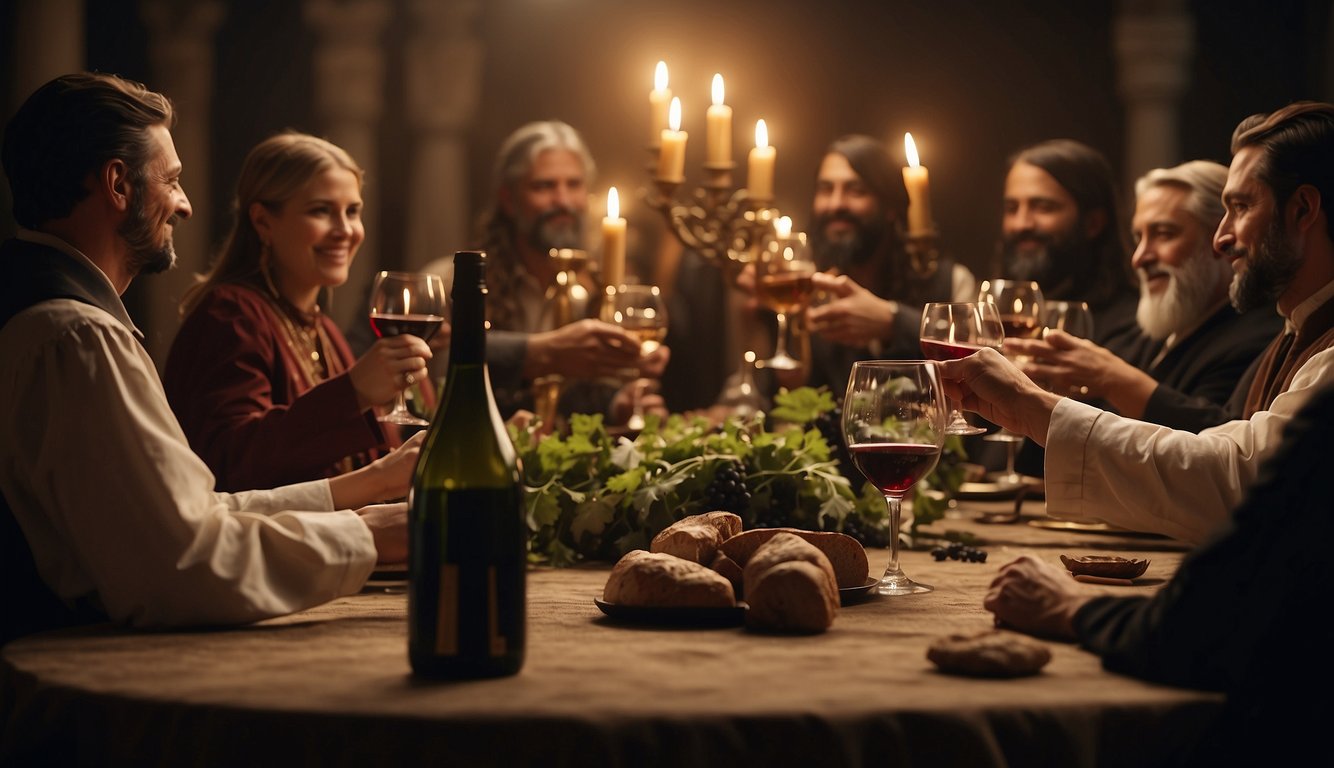
Wine has played a critical role in social hierarchies, celebrations, and even political dynamics. Its importance can be observed from ancient civilizations to modern societies.
Wine as a Marker of Social Status and Prosperity
Wine was often a symbol of social status and wealth. In the Ancient Near East and Mediterranean, serving wine at gatherings signaled prosperity. It wasn’t just any wine; the quality mattered. The Greeks and Romans preferred aged and imported wines in beautifully crafted amphorae, which highlighted their wealth and taste.
In Gaul and Spain, wine cultivation was often linked to the elite class. Having vineyards was a sign of land ownership and prosperity. This tradition of associating wine with status has persisted, seen in how certain vintage wines are highly prized today.
The Role of Wine in Celebrations and Banquets
Wine has always been a key element in celebrations and banquets. The Greek Symposium is a famous example where citizens gathered to drink wine, discuss philosophy, and enjoy performances. This practice was vital for community bonding.
In the Roman period, banquets featured wine heavily. These gatherings often decided political matters and social alliances. Rich families would host these banquets to show their wealth and strengthen their social connections. The custom of using wine in celebrations continues today in weddings, parties, and religious ceremonies worldwide.
Trade and Politics: The Influence of Wine on Community Relationships
Wine also influenced trade and politics. The Phoenicians were known for their extensive trade routes, and wine was one of their major exports. They established trade connections across the Mediterranean, impacting the local economies and political landscapes.
During the Roman era, wine trade flourished, connecting regions like Gaul and Spain to Rome. These trade routes facilitated cultural exchanges and economic growth. The politics of wine trade often determined community relationships, alliances, and even conflicts. Wine, thus, played a crucial role in shaping various aspects of society beyond mere consumption.
For more information on wine’s historical significance, check out the role of wine in the Ancient Mediterranean and the cultural importance of wine in various countries.
Advances in Winemaking and the Evolution of Wine
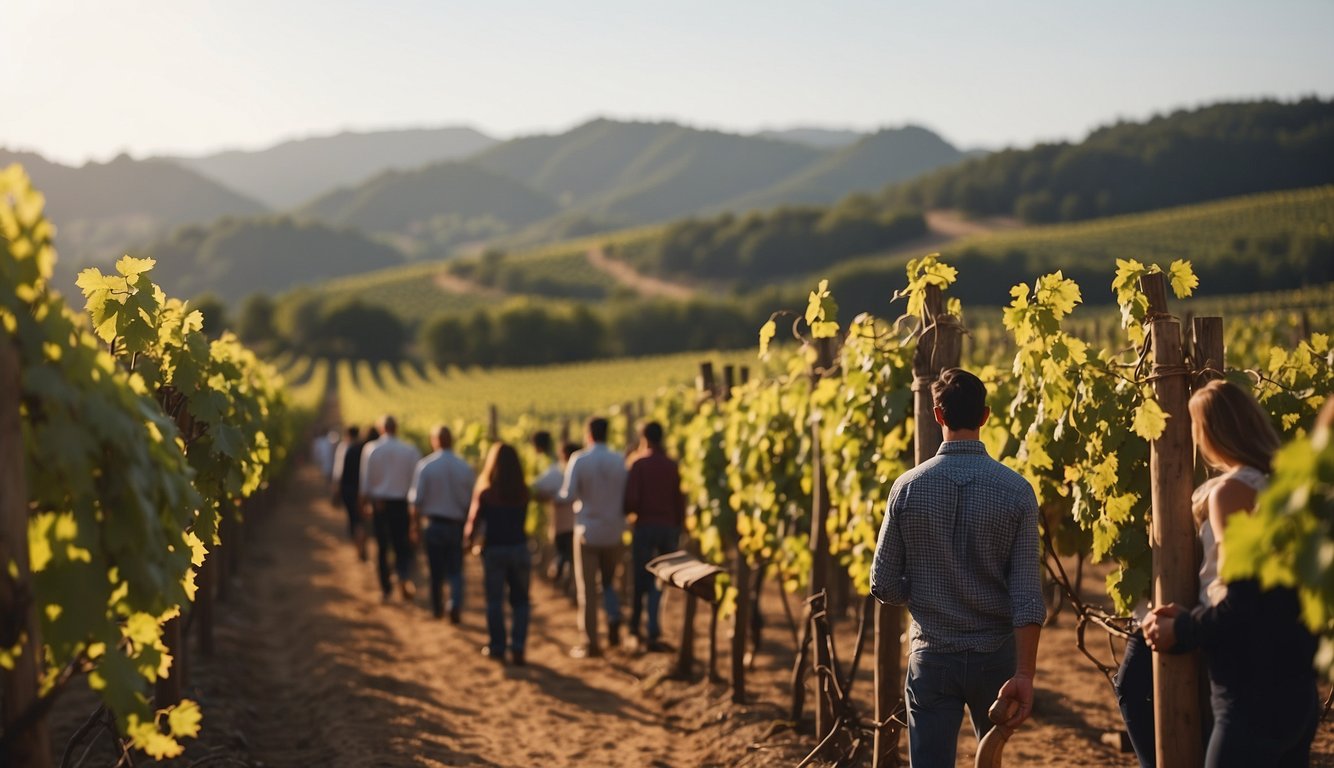
Advances in winemaking have drastically changed how we perceive and produce wine. From ancient techniques to modern innovations, each step has shaped the rich culture and variety of wines we enjoy today.
Innovations in Fermentation Techniques and Grape Production
Ancient civilizations, including those in the Ancient Near East, laid the groundwork for modern winemaking. Early winemakers discovered basic fermentation, turning grape juice into alcohol. These methods evolved during the Neolithic Period and Bronze Age with the addition of advanced vineyard management.
As you move to Roman times, innovations increased. Romans utilized amphoras to store and transport wine, improving fermentation control. Modern winemaking techniques now use controlled environments to manage the fermentation process. Stainless steel tanks ensure precise temperature regulation, enhancing flavor consistency. To further boost production, today’s viticulture employs canopy management and irrigation systems designed for optimal grape growth.
The Spread of Wine Culture and Varietals Across the World
Wine culture spread from the Black Sea and Mediterranean regions to Europe during the Bronze Age, reaching the Iberian Peninsula, Germany, and beyond. The Romans played a key role, bringing viticulture to their conquered lands. As a result, numerous grape varietals emerged, each adapting to local landscapes and climates.
With the discovery of the New World, Spanish and Portuguese explorers introduced wine to the Americas. Each new region developed unique varietals, expanding wine diversity. For example, California in the USA became renowned for its Napa Valley wines. Today, you find countless kinds of wine, each reflecting the region’s history and cultural influences.
The Importance of Terroir in Modern Viticulture
Modern viticulture places great importance on terroir, a French term describing how the environment affects grape production. Factors include soil type, climate, and topography. Understanding terroir helps winemakers create distinct wines that showcase a region’s unique characteristics.
The concept of terroir emphasizes that grapevines in different locales produce diverse flavors and aromas. For instance, the terroir of Germany’s Mosel region is ideal for Riesling grapes, producing world-famous wines. In contrast, the terroir in France’s Bordeaux region is perfect for producing deep, rich red wines. By focusing on terroir, winemakers can tailor their techniques to enhance the quality and distinctiveness of their wine.
Recognizing these factors ensures you experience wines that truly reflect the essence of their birthplaces.
Contemporary Rituals and the Use of Wine in Modern Practices

Wine continues to be a central element in many modern cultural and religious ceremonies. Its symbolism and historic significance are seamlessly woven into the traditions practiced today.
Wine in Modern Religious and Cultural Observances
In Christianity, wine is vital during Communion. It symbolizes the blood of Christ, creating a spiritual connection among participants. During a Jewish Passover Seder, wine marks significant moments throughout the meal, reflecting freedom and joy.
Many Pagan celebrations, such as Samhain, use wine to connect with the afterlife and honor ancestors. In various cultural celebrations, wine symbolizes community and is a key component of rituals that foster togetherness and cultural identity.
The Integration of Ancient Practices in Today’s Wine Ceremonies
Modern ceremonies often blend ancient customs with contemporary practices. For example, some modern wine rituals incorporate ancient Egyptian beliefs in wine’s medicinal and antiseptic properties. These rituals emphasize wine’s role as a preservative and its spiritual significance.
Religious ceremonies today still use wine to symbolize purity and sacrifice, attributes that were also valued in antiquity. Integrating these ancient traditions into modern practices ensures that the profound symbolism of wine continues to thrive and evolve.
